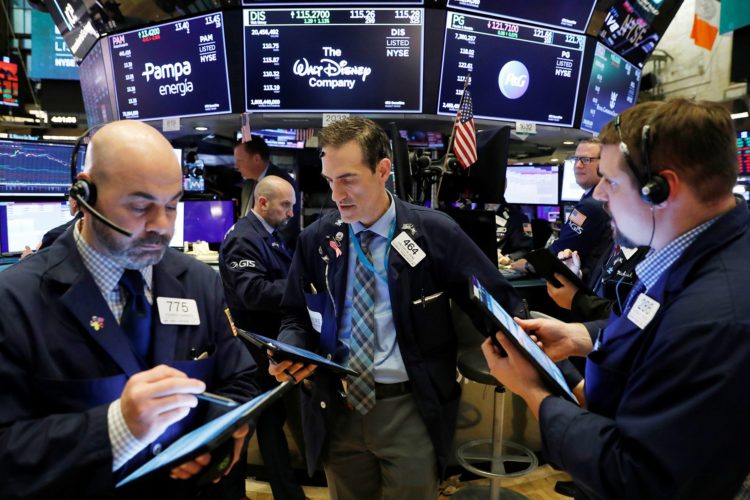Many Americans feared that when WWII came to a close the U.S. economy would slide back into the rut of the Great Depression. However, everyone’s fears were met with just the opposite outcome. American consumers were in a frenzy buying new homes and automobiles, while the aviation and banking industries were booming. The GDP more than doubled over twenty years from the 1940s to the 1960s. In addition to the thriving economy, the spike in childbirths known as the “baby boom” was incredible. Something tells me that a massive spike of pregnancies are happening now and will be born around Christmas.
The stock market crash of 1929 – considered the worst economic event in world history – began on Thursday, October 24, 1929. On October 28, dubbed “Black Monday,” the Dow Jones Industrial Average plunged nearly 13 percent. The market fell another 12 percent the next day, “Black Tuesday.” While the crisis sent shock waves across the financial world, there were numerous signs that a stock market crash was coming. What exactly caused the crash – and could it have been prevented?
A stock market peak occurred before the crash. During the “Roaring Twenties,” the U.S. economy and the stock market experienced rapid expansion, and stocks hit record highs. The Dow increased six-fold from August 1921 to September 1929, leading economists such as Irving Fisher to conclude, “Stock prices have reached what looks like a permanently high plateau.” Is anything sounding familiar yet?

COVID-19 has millions of people laid off within the U.S. until we as a country and globe get COVID-19 spread under control.
President Donald Trump announced Sunday that he’s extending his administration’s guidelines on social distancing during the COVID-19 outbreak until April 30. This marked a change for the president who said last week that he wanted to see much of the country return to normal by Easter, April 12, despite warnings from top health experts that easing the guidelines too soon could cause widespread deaths and economic damage.
COVID-19 has millions of people laid off within the U.S. until we as a country and globe get COVID-19 spread under control. While many healthy adults are not overly concerned about the virus, they are apprehensive about supplies such as toilet paper and other goods. With more and more companies closing their doors, our grocery stores will get more and more sparse.
The global death toll is now over 37,000 (as of March 31, 2020), and there are more than 140,000 confirmed cases in the U.S., according to the Johns Hopkins University. Johnson & Johnson announced Monday that it had selected a coronavirus vaccine candidate to test in humans. The experimental vaccine will begin the first phase of human clinical trials in September. If the testing goes as planned, the first round of vaccines could be administered under emergency authorization in early 2021, according to the company. However, I’m skeptical it will be too little too late
The economy will likely surge back by June as thought by Mnuchin (United States Secretary of the Treasury), saying that the stock market will “absolutely” return to its previous highs. For long-term investors, the U.S. is still a great bet, he said, echoing the message frequently disseminated by Larry Kudlow, President Donald Trump’s top economic adviser. Mnuchin said the administration hopes to release further instructions for small businesses later on Monday. However, June is a very long time away, and we have seen genuine changes in just the past two months.
Ford stocks are at five dollars, something it hasn’t seen since 2008. However, their numbers have slowly been dropping for the past several years. While I am no financial expert, Tesla has been landing some big contracts, and if I were a betting man, this might be something to look into heavily.
Spain has become the third country to surpass the total number of reported coronavirus infections in China. The country’s health ministry announced 6,398 new cases Monday, bringing the total to 85,195 cases. That number is higher than China’s reported 81,470 cases as of Monday. The U.S. currently has the most confirmed coronavirus cases with 142,801 infections; Italy is second with 97,689 coronavirus cases.
Already have an account? Sign In
Two ways to continue to read this article.
Subscribe
$1.99
every 4 weeks
- Unlimited access to all articles
- Support independent journalism
- Ad-free reading experience
Subscribe Now
Recurring Monthly. Cancel Anytime.
On Sunday, Iran’s judiciary spokesman Gholamhossein Esmaili said nearly 100,000 prisoners would be temporarily released to ease the pressure on the healthcare system as the country struggles to contain the coronavirus outbreak. It’s the second wave of prisoners to be released amid the epidemic. Earlier this month, Iran temporarily freed about 85,000 people from jail, including political prisoners. Temporarily? Yes, you read that correctly; apparently, their government expects them to come back.
New York City residents who do not follow social distancing policies will be subjected to a fine between $250 to $500, according to Mayor Bill de Blasio. Those who flagrantly ignore advice from police officers to move on and continue to violate policies will be fined, he said Sunday. The Centers for Disease Control and Prevention issued a travel advisory urging residents of New York, New Jersey, and Connecticut “to refrain from non-essential domestic travel for 14 days effective immediately.”
So what do we do? I suggest that we do as the government wants and shelter at home, and hopefully, we can stop or slow the spread of COVID-19.










